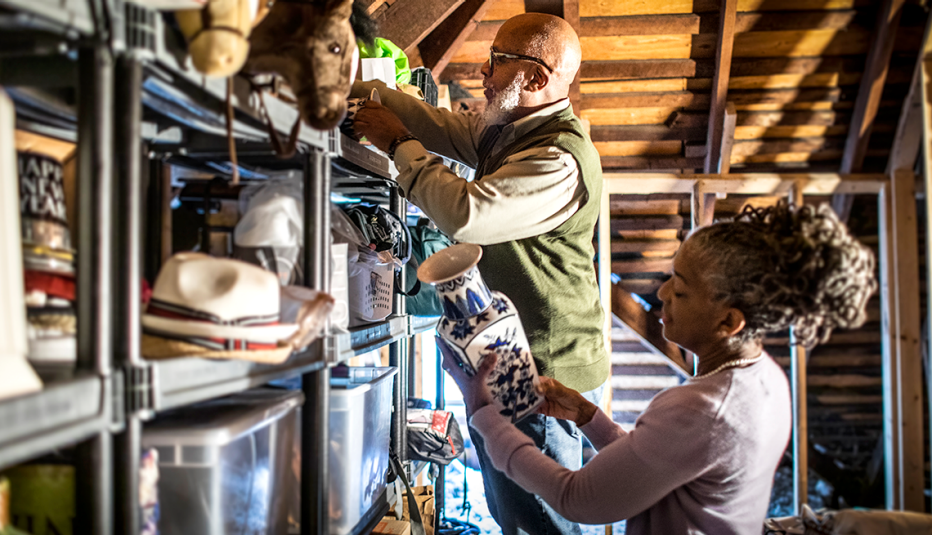Staying Fit


The latest export from Sweden isn’t a sturdy station wagon or a funky furniture store, but rather a way of life.
More specifically, it’s a way of end-of-life. It's called döstädning, which translates to “death cleaning.”
A new reality show, The Gentle Art of Swedish Death Cleaning on Peacock, brings this Swedish concept to American soil. The series, hosted by comedian Amy Poehler, features a team of Scandinavian experts who help peope declutter their lives.


AARP Membership— $12 for your first year when you sign up for Automatic Renewal
Get instant access to members-only products and hundreds of discounts, a free second membership, and a subscription to AARP the Magazine.
The concept isn’t wholly new to America. It’s inspired by a book of the same name written by Margareta Magnusson, who was over 80 when the tome was published in 2017. The book introduced the world to the Scandinavian practice of Swedish death cleaning, which is as much about relieving a burden on family left behind after someone dies as it is about creating an organized home.
In 2022, Magnusson published a second book: The Swedish Art of Aging Exuberantly: Life Wisdom from Someone Who Will (Probably) Die Before You. It was a call to “not leave a mountain of crap behind for our loved ones to clean up after we die,” she told The New York Times this year.
Magnusson has said the ritual of Swedish death cleaning can begin when people are in their 40s or 50s, and it goes way beyond tossing stuff. As one of the participants in the Peacock series notes: “I knew that you guys were going to declutter my house. I didn’t know you were going to declutter my soul.”
AARP spoke with Magnusson when her first book was published, and she explained the idea behind Swedish death cleaning. Here’s what she had to say.
Q: What problems does keeping too much stuff cause your loved ones after you’re gone?
A: It’s very time-consuming. Why should my family take so much time — having jobs, families and everything else they have scheduled — to take care of my things?
Q: How do you decide what to keep or discard?
A: Talk about it with your family. It’s a delight to go through things and remember their worth. But if you don’t remember why a thing has meaning, then it has no worth, and it will be easier for you to part with.
Q: You write that you should get rid of “private” items — such as diaries. Why?
A: If you think a secret will cause your loved ones harm or unhappiness, then make sure to destroy such items. Make a bonfire or shove them into a hungry shredder.
Q: How does cleaning help the cleaner?
A: The more I have focused on my cleaning, the braver I have become in discarding possessions. I have had a moment to reflect on the event or feeling, good or bad, and to know that it had been a part of my story and my life.
Editor's note: This article was originally published on January 9, 2018. It has been been updated to reflect new information.



































































More From AARP
8 Things You Never Clean but Should
The dirtiest things in your house might surprise you
Where to Donate All Your Unwanted Stuff
Declutter by finding new homes for electronics, medical supplies, furniture and more
13 Things to Throw Away Right Now
A trend toward minimalism means only keeping items that add value to your life